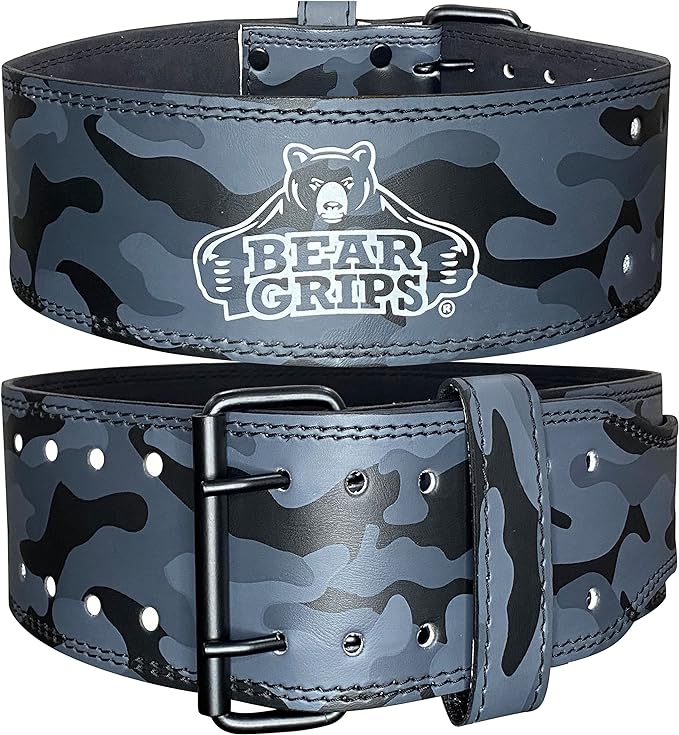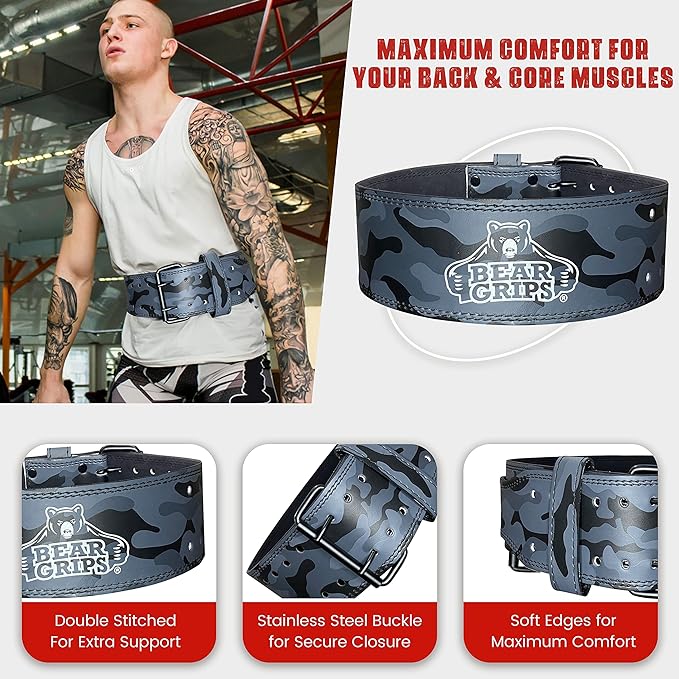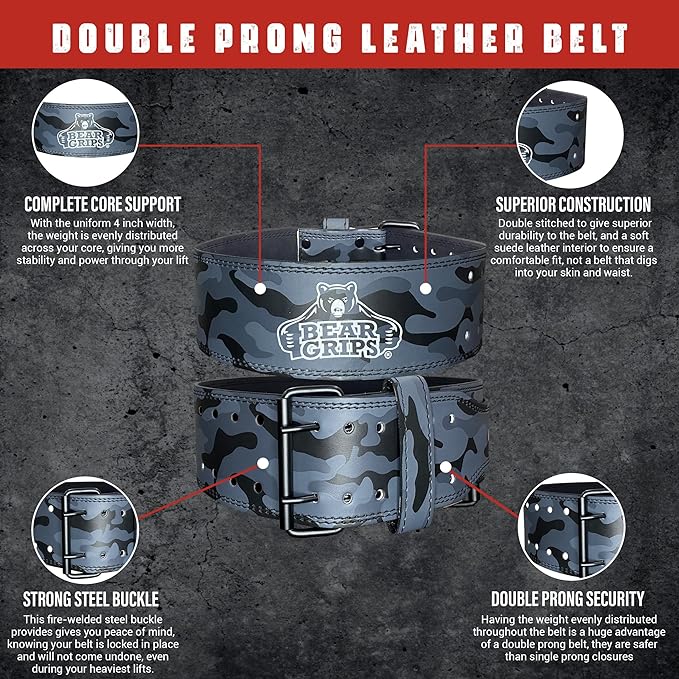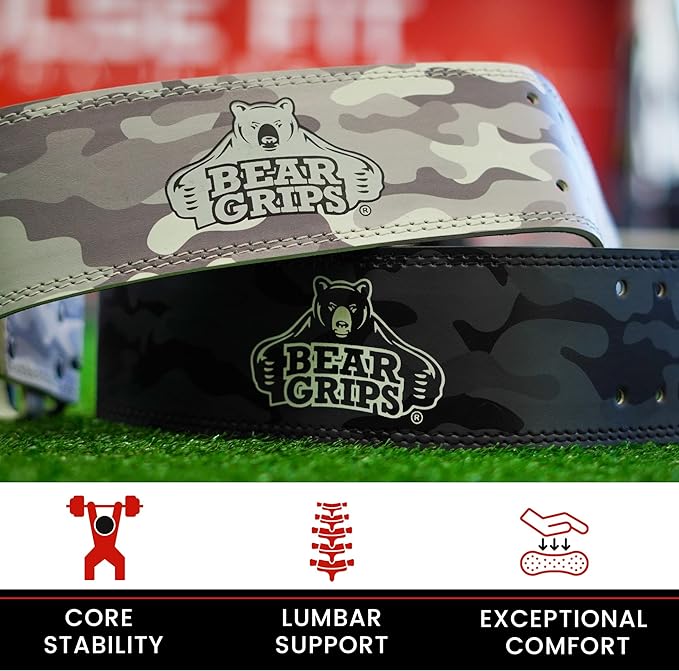
Lever Belt Vs Prong Belt: Which One Is Better For You
Share
In the world of weightlifting, having the right equipment is essential for optimizing your training routine. One important gear piece that can greatly impact your performance is the weightlifting belt. When it comes to weightlifting belts, the debate between lever belts and prong belts has been a hot topic among lifters. Each style has its own advantages and considerations to keep in mind.
Lever belts are known for their convenience and quick release mechanism. These belts feature a lever buckle system that allows for easy fastening and removal, saving you valuable time during your workouts or competitions. On the other hand, prong belts offer adjustability and customization. With their traditional buckle system, you can easily adjust the tightness of the belt to meet your specific needs and preferences.

To determine which belt is better for you, it's important to consider several factors. Analyzing the mechanical variations and material quality, as well as evaluating tightness and comfort, ease of use and practicality, performance and versatility, durability and longevity, and the comparison of value for money will help you make an informed decision.
Key Takeaways:
- Both lever belts and prong belts have their advantages and considerations.
- Lever belts offer convenience and a quick release mechanism, while prong belts provide adjustability and customization.
- Analyzing factors such as tightness and comfort, ease of use and practicality, performance and versatility, durability and longevity, and value for money will help you choose the right belt for your needs.
Key Differences Between Lever and Prong Belts
The primary distinction between lever and prong belts lies in their closure systems. Lever belts feature a lever buckle mechanism for a quick and secure fit, while prong belts utilize a traditional buckle system.
Both types of belts can be made from different materials, such as leather or synthetic materials. Leather belts are known for their durability and support, providing maximum stability during heavy lifts. On the other hand, nylon belts offer flexibility and comfort, allowing for a more comfortable fit during workouts.
The thickness and width of the belt also play a significant role in its effectiveness. A thicker belt provides additional support and stability, while a wider belt distributes the pressure over a larger area, reducing the risk of discomfort or injury.
Understanding the mechanical variations and material and build quality is essential when choosing between a lever belt and a prong belt. Considering your individual needs and preferences will help you make an informed decision.
The closure system:
- Lever belts feature a secure and quick-release mechanism, making them easy to tighten and loosen during workouts.
- Prong belts use a traditional buckle system, offering adjustability for a personalized fit.
Material and build quality:
- Leather belts are known for their durability and strong support, providing stability during heavy lifts.
- Nylon belts offer flexibility and comfort, making them ideal for dynamic movements.
By understanding the differences in closure systems, materials, and build quality, you can choose the belt that best suits your weightlifting needs. Consider factors such as the type of exercises you perform, your personal comfort preferences, and the level of support and adjustability you require.

Analyzing Tightness and Comfort
When it comes to weightlifting belts, tightness and comfort are crucial factors to consider. Both lever belts and prong belts offer different levels of adjustability and support, allowing lifters to find the perfect fit for their training needs.
Lever belts provide a consistent level of compression each time they are fastened, offering a uniform level of support and bracing. This ensures that the belt remains tight and secure throughout your entire workout. However, if you need to make any significant changes in waist size, lever belts require the use of a screwdriver, which may be less convenient for some lifters.
On the other hand, prong belts excel in adjustability and fit. The traditional prong buckle system allows for quick and easy adjustments, making it ideal for accommodating changes in clothing, body size, or personal tightness preferences. With the ability to fine-tune the fit on-the-fly, prong belts offer greater versatility in the gym.
When it comes to comfort, both lever belts and prong belts can provide excellent support. Lever belts typically have a wider strap that distributes pressure more evenly across the core, reducing discomfort during heavy lifts. Prong belts, especially those with padded interiors, offer additional cushioning and can enhance overall comfort during workouts.
Ultimately, the choice between a lever belt and a prong belt depends on your preferences and needs. If you prioritize consistency in tightness and convenience for on-the-fly adjustments, a lever belt may be the right choice for you. If adjustability and versatility are paramount, a prong belt can give you the flexibility you need for an optimized lifting experience.
Remember, the key is to choose a belt that offers both tightness and comfort, allowing you to lift with confidence and support.

Ease of Use and Practicality in the Gym
When it comes to weightlifting belts, ease of use and practicality are crucial factors to consider. In this section, we will explore how lever belts and prong belts differ in terms of their convenience and adjustability, providing insight into which one may best suit your needs in the gym.
Lever Belts: Quick Adjustment Mechanism
Lever belts are well-known for their quick adjustment mechanism, making them an excellent choice for lifters who prioritize time efficiency during their workouts or competitions. With a simple flip of the lever, these belts can be easily secured or released, ensuring a hassle-free experience. The ability to swiftly adjust the belt allows you to focus on your lifts without unnecessary distractions or delays.
Prong Belts: Greater Adjustability
If you value adjustability and customization, prong belts may be the ideal option for you. While they may take slightly more time to fasten compared to lever belts, prong belts offer greater adjustability for different exercises and intensity levels. This versatility allows you to fine-tune the belt and create a customized fit that suits your specific needs. Whether you need a tighter or looser setting, prong belts can easily be adjusted on the fly.
Both lever belts and prong belts have their unique advantages in terms of ease of use and practicality. Lever belts excel in their quick adjustment mechanism, making them ideal for scenarios where time is of the essence. On the other hand, prong belts offer greater adjustability for different exercises and intensity levels, allowing for easy on-the-fly adjustments.
Now that we have explored the ease of use and practicality of both types of belts, let's delve deeper into the other aspects to consider when making your decision.
Conclusion
When it comes to choosing a weightlifting belt, the decision between a lever belt and a prong belt depends on several important factors. It's essential to consider your personal preferences, training style, and specific needs to make the right choice for your weightlifting journey.
Lever belts offer the convenience of a quick release mechanism, allowing for easy adjustments during your workouts. On the other hand, prong belts excel in adjustability and versatility, making them ideal for adapting to different exercises and intensity levels.
Factors such as tightness and comfort, ease of use and practicality, performance and versatility, durability and longevity, and value for money should also be considered. Each type of belt has its own strengths in these areas, and understanding your priorities will help you make an informed decision.
Choosing the right belt can have a significant impact on your weightlifting journey. It can optimize your training routine by providing the necessary support and stability for heavy lifts. Take the time to evaluate the factors mentioned above and select the belt that aligns with your needs and goals.
Find best lever belts at Bear Grips and check out the website today!
Shop now at Amazon.com.
FAQ
What are the key differences between lever belts and prong belts?
Lever belts feature a lever buckle mechanism for quick and secure fitting, while prong belts utilize a traditional buckle system. Lever belts provide convenience and quick release, while prong belts offer adjustability and customization.
What materials are lever belts and prong belts made from?
Both lever belts and prong belts can be made from leather or synthetic materials. Leather belts offer durability and support, while nylon belts provide flexibility and comfort.
How do lever belts and prong belts differ in terms of tightness and comfort?
Lever belts provide consistent compression each time they are fastened, offering a uniform level of support and bracing. Prong belts excel in adjustability and fit, allowing for quick and easy adjustments to accommodate changes in clothing, body size, or personal tightness preferences. The ability to fine-tune the fit on the fly makes prong belts more versatile.
Which type of weightlifting belt is easier to use in the gym?
Lever belts are renowned for their quick adjustment mechanism, making them ideal for scenarios where time is of the essence. They can be secured and released swiftly, providing a hassle-free experience during workouts or competitions. Prong belts, on the other hand, offer greater adjustability for different exercises and intensity levels. While they may require more time to fasten, the ability to easily adjust the belt on the fly adds to their practicality in the gym.
How should I choose between a lever belt and a prong belt?
When choosing between a lever belt and a prong belt, factors such as tightness and comfort, ease of use and practicality, performance and versatility, durability and longevity, and value for money should be considered. The decision should be based on your personal preferences, training style, and specific needs, as both types offer unique benefits. Choosing the right belt can significantly impact your weightlifting journey and optimize your training routine.


